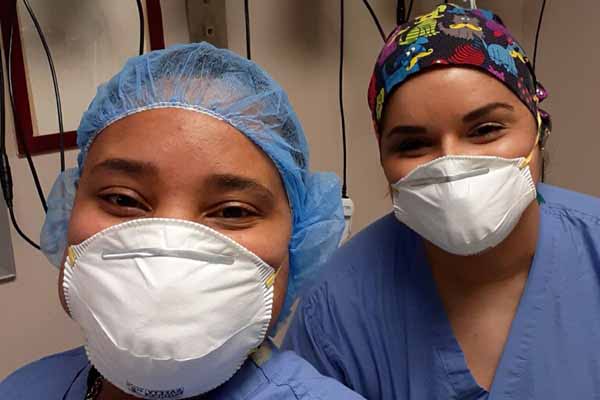
On June 21, the Occupational Safety and Health Administration (OSHA) issued a temporary set of regulations – called an “emergency temporary standard” (ETS) – for health care facilities taking care of COVID-19 patients or suspected COVID-19 patients. Facilities required to comply need to meet most of the ETS regulations starting Tuesday, July 6. Since then, physicians have been left wondering: Does this ETS apply to my practice? And if so, how do I comply?
To the first question, the answer is probably “no” if your practice screens patients and vendors before arrival and requires them to postpone their visit if they have COVID-19 symptoms, says Marge McFarlane, PhD, principal at Superior Performance Consultants in La Pointe, Wis., and a consultant for the Texas Medical Association on OSHA-related issues.
For example, practices that are not covered by the ETS might include ambulatory surgery centers or ophthalmology offices, she says.
“You’re not going to see me if I have [COVID-19] symptoms,” she said
But the answer is “yes” – your practice must comply with the new regulations – if your practice treats patients with respiratory illnesses that could include COVID-19 symptoms, she says. That would include practices that specialize in pulmonology, family medicine, and pediatrics, and emergency departments or urgent care centers. It also includes long-term care facilities and hospitals.
“The ETS covers [medical practices that help] sick people who could have COVID-19,” she said. “That’s a bottom line about whether you’re covered or not.”
The answer to “How do I comply?” is more complicated because both types of practices – both those saying yes and no – have good reasons to follow the ETS, she says.
Those who responded yes don’t want to risk being out of compliance with OSHA rules, Dr. McFarlane says. But she says those who responded no might now face additional workers’ compensation claims from any workers who get sick from COVID-19, and following the ETS is the best way to avoid that.
Either way, physicians will face workers’ compensation claims due to cases of COVID-19, but the ETS is meant to minimize the risk to health care workers, she says.
Physicians should go to the ETS web page and read the OSHA materials under the heading “Implementing the ETS,” Dr. McFarlane says. They should pay particular attention to the “COVID Plan Template” and the “COVID-19 Healthcare Worksite Checklist & Employee Job Hazard Analysis,” she says.
A written plan for dealing with COVID-19 is required for compliance, and this template will keep physician offices from starting from scratch, she says. Written COVID-19 plans are required for practices that have more than 10 employees.
“If you have this information, why would you not write this down, because how do you plan to train new people if you don’t?” she said.
The 11-page checklist helps physicians understand exactly what steps are required to comply with the ETS, Dr. McFarlane says.
Many of the ETS requirements cover things practices should already have in place, such as a COVID-19 plan, patient screening and management, training, disinfection protocols, and physical barriers, Dr. McFarlane says. But the ETS may require changes such as a review of ventilation efficiency, creating anti-retaliation policies, and enhanced record-keeping.
Employers must comply with most provisions of the ETS by July 6 and with the remaining provisions by July 21, OSHA says in the press release announcing the ETS. OSHA will use its enforcement discretion to avoid citing employers who miss a compliance deadline but are making a good faith effort to comply with the ETS, the agency added.
Dr. McFarlane says physicians have asked her why OSHA is putting out these regulations so late in the pandemic, and why the agency is targeting health care facilities when vaccines are available. The answer is that compliance with COVID-19 guidelines set by the Centers for Disease Control and Prevention and compliance with the OSHA General Duty Clause for health care institutions have been erratic, she says.
OSHA has determined that COVID-19 continues to present “grave danger,” which means it is incurable, permanent, and nonfleeting, Dr. McFarlane says. Because workers in health care settings where COVID-19 patients are treated continue to have regular exposure to the virus and any variants that develop, they remain at heightened risk of contracting the disease regardless of vaccination status.
Also, a significant number of health care workers have yet to be vaccinated against COVID-19, Dr. McFarlane says. One March survey found that up to half of all health care workers may still be unvaccinated.
The ETS went into effect June 21 and is set to expire six months later, in December, OSHA says.
Dr. McFarlane says that means these regulations might go away once the six-month period expires. Or, they might evolve into a permanent infectious disease standard. This may present an administrative challenge for physicians in the meantime because the ETS will be updated as information about COVID-19 changes over time. The agency also could extend the ETS if the agency believes it’s needed to protect workers.
“This could be a moving target as we get more information,” she said.